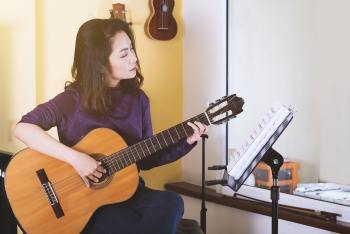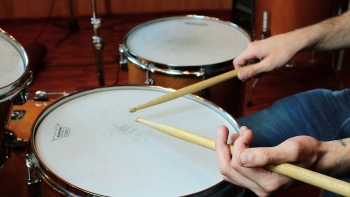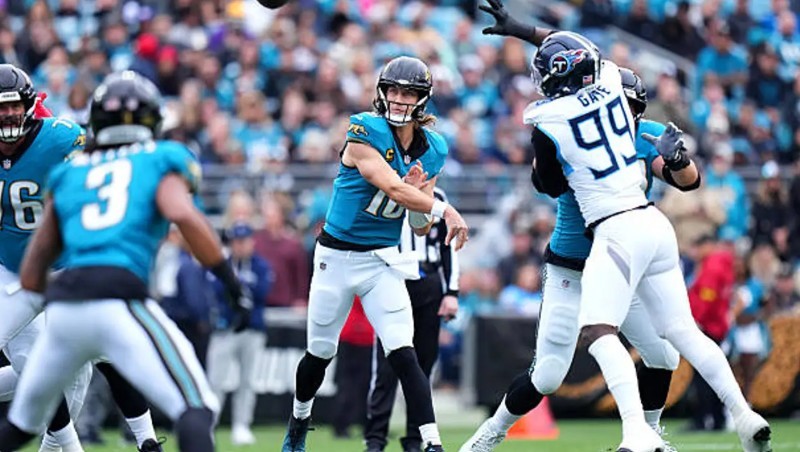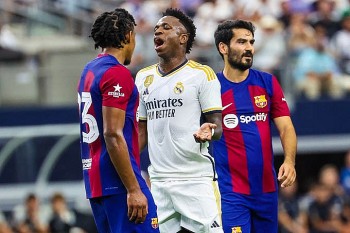How to Play Chess for Kids & Chess Rules
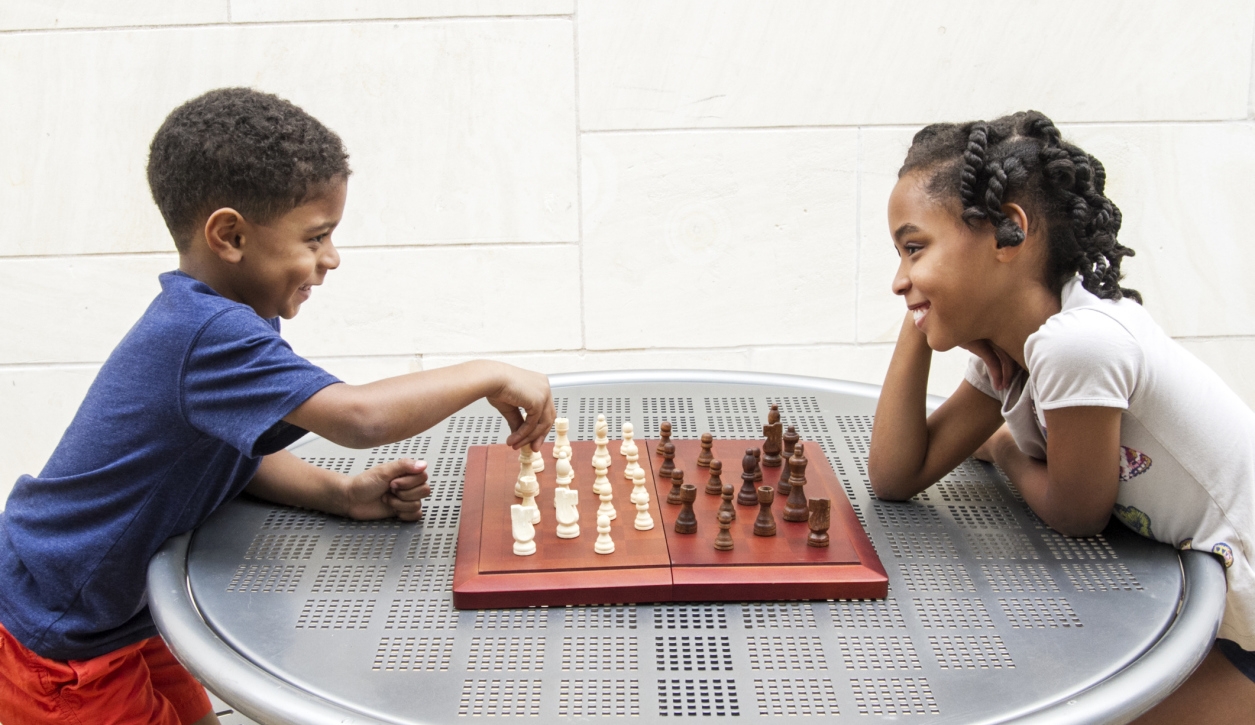 |
| It's good for children to start playing chess at an early age. Photo: SheKnows |
The start of your journey may begin simply as it did for Bobby Fischer, the famous American grandmaster. The 11th world chess champion once said:
“When I was six, my sister bought me a set at a candy store and taught me the moves.”
By teaching chess to your kid, you have the opportunity to create many lasting and fond memories.
How to Teach your Kids to Play Chess
1. Be Positive
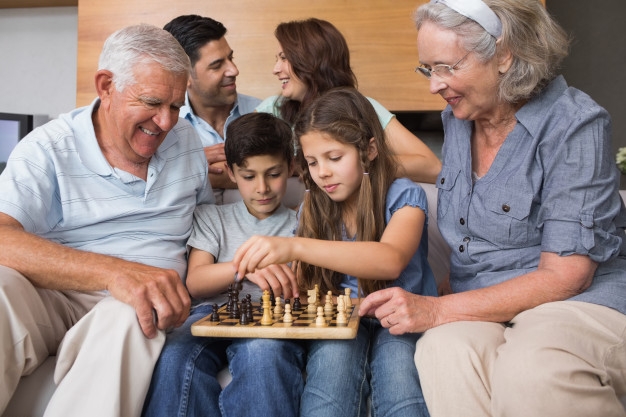 |
| Photo: Freepik |
Remember when you were a kid? Didn’t you learn more effectively when the environment was encouraging and positive? Chess is fun. That’s why we play.
Winning is not the only positive way to benefit from playing chess. Everyone makes mistakes in chess—everyone, even grandmasters. Make sure that your kid learns positively from mistakes (and losing) as well as feels successful after playing well (and winning).
2. Be Patient
Again, reflect back to when you were a kid. Remember learning some topics quickly and others more slowly? Learning often takes a circuitous route. Beginners will learn chess on their own schedules based on their abilities. A caution: Don’t expect too much too soon if you are an experienced player. Learning chess is like solving a puzzle.
Learning a new concept in chess is like adding a piece to complete a puzzle. When the completed sections of a puzzle expand as more pieces are joined together, the sense of satisfaction grows. Similarly with chess—remember to be patient as your kid learns.
3. Make Chess Fun
Learning thrives not only in a patient environment but in an activity that’s fun. That’s why kids love games, and chess is a game after all. Fun games can teach important concepts.
The key is to make sure that fun is a part of each chess activity, whether it is a lesson or a game.
4. Have Structure in How You Teach
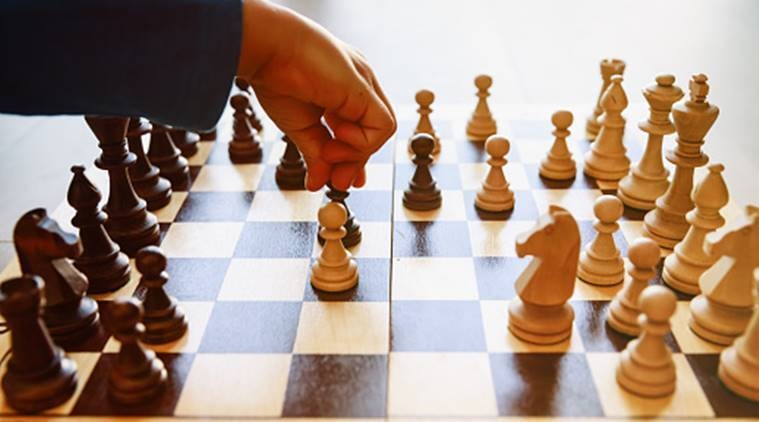 |
| Photo: The Indian Express |
Surprise! We have already done the work for you. The Planner, a week-by-week guide, makes sure that you cover the basics as you complete its 30 units. If you’ve never taught chess before, the planner is invaluable. Each unit is a mini-lesson plan that includes a chess topic and several creative activities.
The graduated levels in the lessons show areas that have been covered and areas that still need to be taught. In addition, computer workouts can reinforce the information that you are teaching.
5. Set Aside A Regular Time for Chess
Setting aside a regular time for chess is imperative. Both you and your kid will protect the time from other obligations and will plan to use it productively. A vital part of having a schedule is complying with it routinely.
Planning to focus on chess at regularly recurring intervals, such as a specific weekday, establishes that the learning is important and that progress is expected.
6. Cover The Basics Incrementally
No one can learn everything about a new topic overnight. Plan to introduce chess concepts to your kid incrementally.
Again, the planner is set up to help you do that. Take your time. Don’t overload a beginner by doing too much too quickly.
Spacing the lessons over time and learning new concepts incrementally should improve retention, too.
7. Encourage Kids To Read About Chess
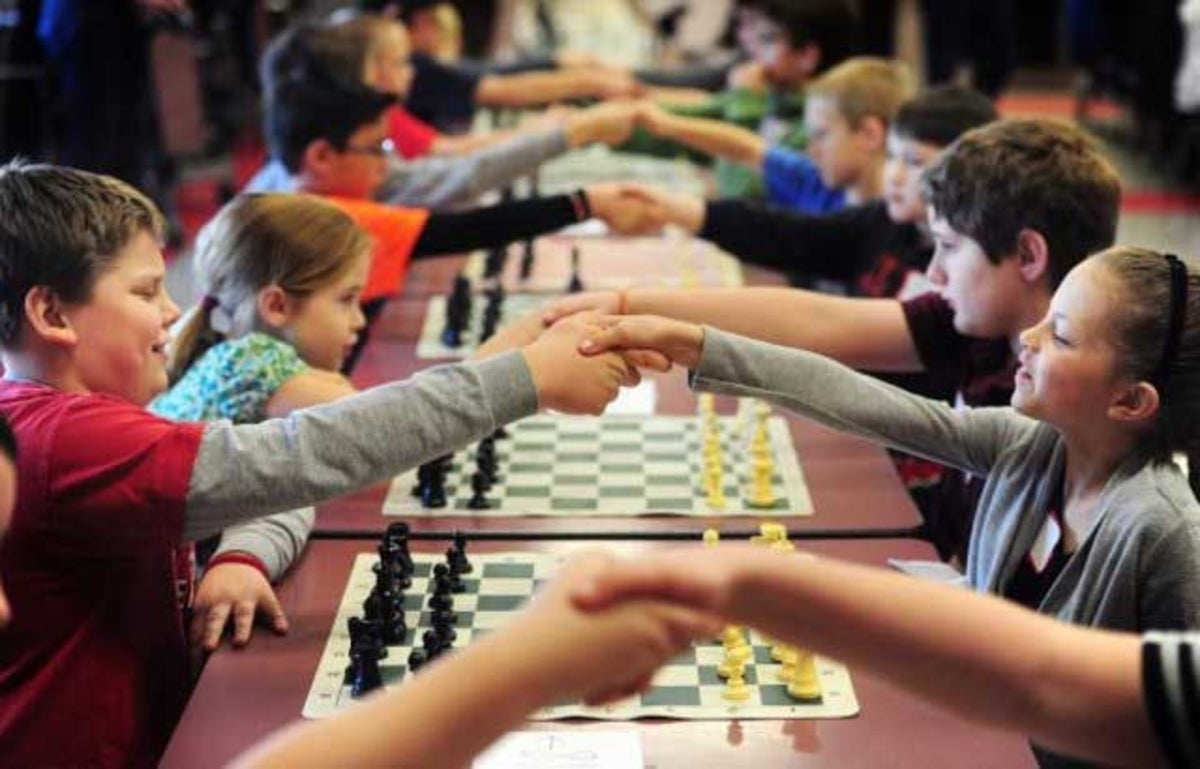 |
| Photo: Patch |
Reading about chess helps to develop reading skills and improve comprehension. Several articles on KnowInsiders are aimed specifically at kids (others are written for parents, coaches & administrators) and may encourage them to improve their chess skills.
A good one for kids to read as they begin to learn is How To Play Chess For Kids, which explains the game, introduces the pieces, covers several rules, and reviews important details for beginners.
8. Use The Videos On ChessKid
The videos on ChessKid are phenomenal—they are not only instructional but also entertaining. How do kids like to be taught? Watching a video is probably an appreciated approach.
Visual learning is an important component that complements other teaching methods and is helpful when new information is presented.
9. Practice With The Puzzles
Kids love puzzles. New chess players are no exception. The puzzles are a fun way to learn how to make decisions in a game and focus on selecting the best move.
Each puzzle is easy to play, allows you to replay it if you don’t solve it initially, and shows the solution if you are stumped and can’t identify the right move.
10. Encourage Their Friends To Learn Chess Too
Kids love to learn with others. Playing with friends not only improves chess knowledge but teaches game etiquette and improves social interaction. Connect with other beginning players too by playing online.
Kids can also easily play individual games with their friends online, too. An online chess game with a friend is a great way to spend time on a rainy day and during summer vacations.
11. Link The Value Of Chess To Other Educational Goals
Learning chess has many tangible benefits. Chess introduces math, vocabulary, and social-emotional concepts for kids—all in the fun context of learning a game. For example, chess can reinforce the skills of kids with numbers, counting, comparisons, spatial reasoning, and other important math concepts.
How To Set Up The Chess Board
First, it’s important to know how to set up the board so you can play.
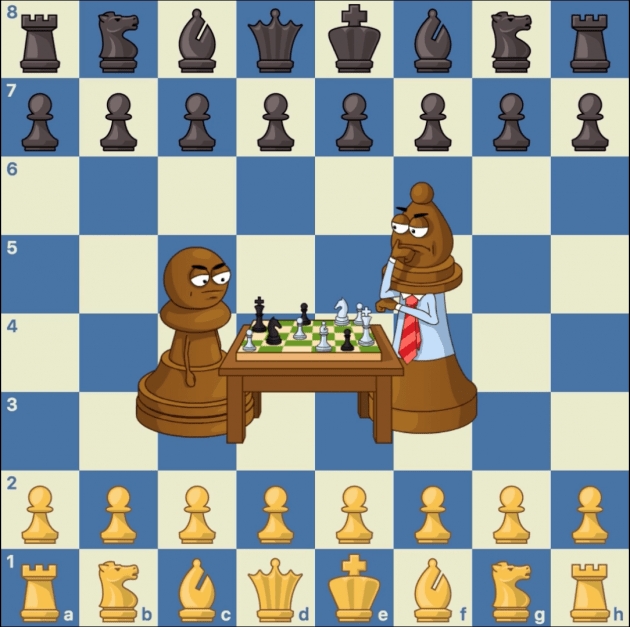 |
| Photo: Chess Kids |
The setup of pieces is very important. The major pieces (rook and queen), minor pieces (bishop and knight), and the king are all on the last row of a chessboard.
The rooks occupy the corner squares. Next to the rook is a knight. The bishop takes the other square next to the knight. The queen is always placed on her color (white queen on the white square), and the king is placed next to her.
Your eight pawns occupy the next row all in a straight line. Your opponent’s pieces reflect the same positions as yours, including the queen that occupies a square that matches her color.
To start a game, White always moves first.
Any pawn may move but the strongest initial moves by pawns are by the middle ones to control the center of the board. In addition, a knight may move. Because the other pieces are blocked by the line of pawns, they may not move yet. Before we discuss opening moves more, let’s get to know each piece and how it moves.
How Do Chess Pieces Move?
Learning chess pieces is very important. Let’s see how each one moves, too:
The King
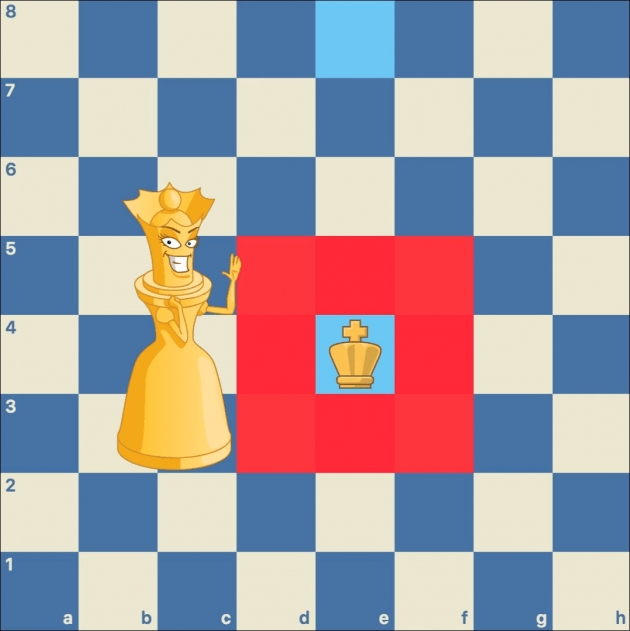 |
| Photo: Chess Kids |
The king is the most important piece because you lose the game when he is attacked and can't get to safety. This is called checkmate, and it is how a game is decided.
When your king is threatened by being placed in check, you must remove the threat. A king can move one square in any direction (except it moves two squares when castling, which is discussed as a special move below), but it cannot move into check or next to the enemy king. It can capture any enemy piece except the king. Because of its weakness, the king rarely plays an active role until the endgame.
The Queen
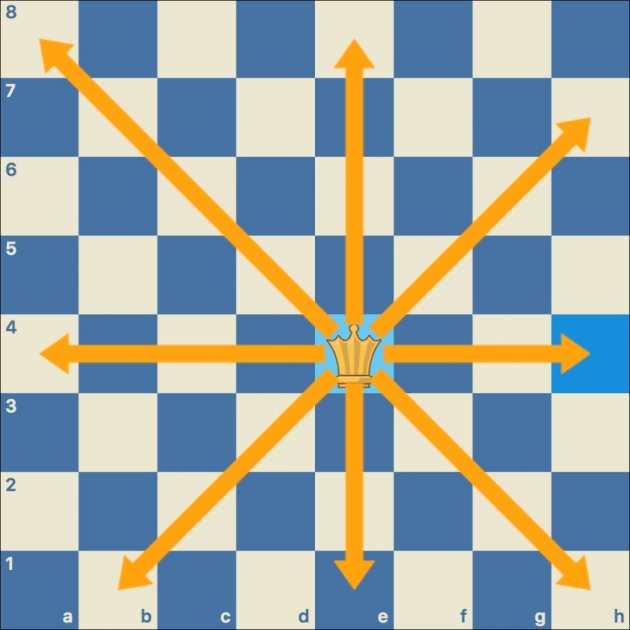 |
| Photo: Chess Kids |
The queen is the most powerful piece because it can move in any straight-line direction: vertically, horizontally, or diagonally. It also can move any number of squares.
Although you start with only one queen, you may gain another one when a pawn promotes (see special moves below). Because the queen is slightly stronger than a rook and bishop together, exchanging the queen for a single piece other than the enemy queen is usually not a good idea.
The Rook
 |
| Photo: Chess Kids |
You have two rooks; each one starts on a corner square. It may move vertically or horizontally through any unoccupied square.
It participates with the king in a special move called castling. A major piece, the rook is stronger than a bishop or knight. Rooks are very powerful in the endgame when they can control many squares and move without being blocked by pawns.
The Bishop
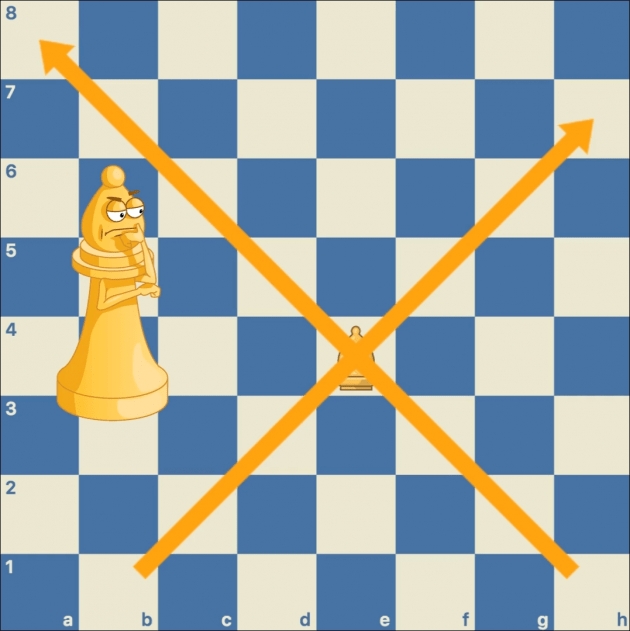 |
| Photo: Chess Kids |
You also start with two bishops, one on a light square and one on a dark square. Like a rook, a bishop may move through any unoccupied square, but each one moves only diagonally.
Because it always stays on the same color, it has access to only half of the squares on the board.
The Knight
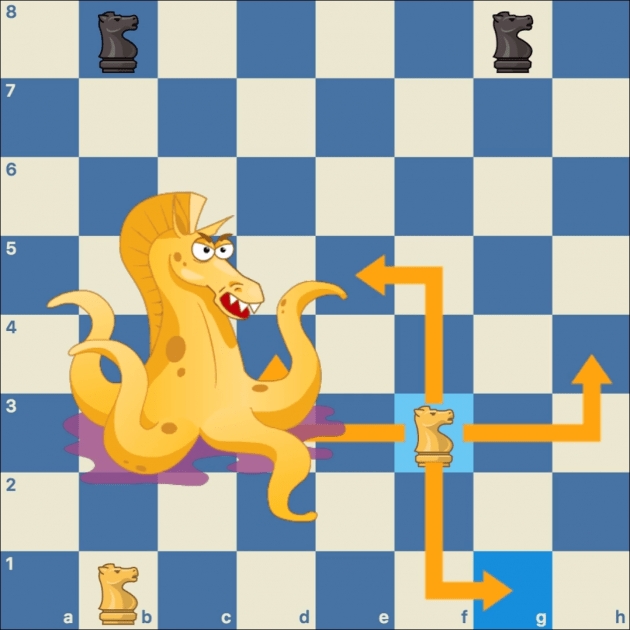 |
| Photo: Chess Kids |
Unlike other pieces, the knight moves in two directions at once. This tricky piece moves in an "L"-shaped pattern (two squares in one direction and then one square in a different direction).
In the center of the board, it can dangerously attack many squares and is well-suited for a tactic known as a fork. Although a minor piece, the knight is useful in “closed” games when many pieces clutter the board because it alone has the special ability to jump over any piece.
The Pawn
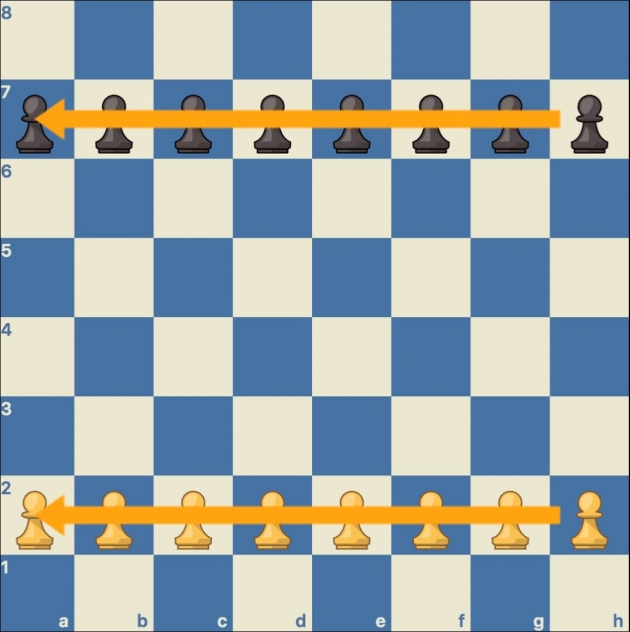 |
| Photo: Chess Kids |
Each player begins with eight pawns, each one in a line in front of the other pieces.
Until a pawn advances across the board to the final rank when it can be promoted, it is the weakest piece in most situations, but it can be valuable to block enemy pieces. Unlike other pieces, a pawn moves only forward unless it is capturing an enemy piece, which it does by moving diagonally one square to the left or right. It moves only one square except on its first move when it may move one or two squares forward. A surprising move of the pawn is the en passant capture (described in special moves below).
Special Chess Moves
Does chess have unusual moves? You bet! Three special moves may occur in a game:
Castling
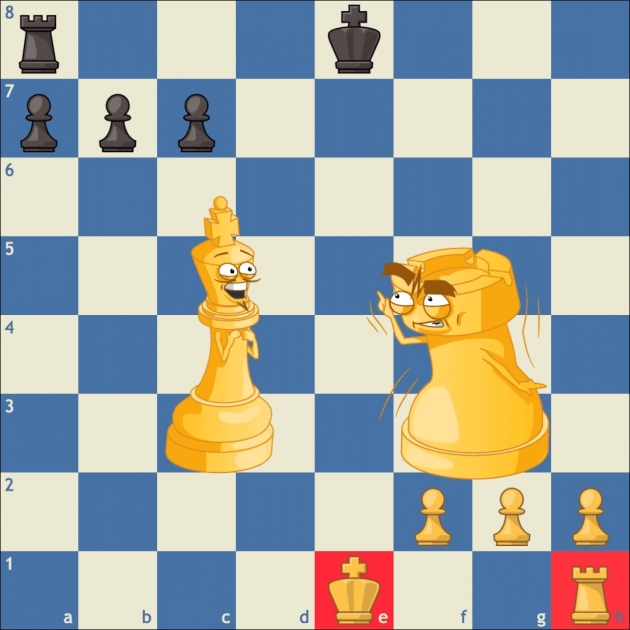 |
| Photo: Chess Kids |
Normally you may move just one piece at a time. However, castling involves moving two pieces at the same time: your king and a rook if they have both not been moved yet.
The king moves to two squares laterally—kingside or queenside—and the rook moves next to it on the other side. The king cannot be in check before or after castling or move through check.
En Passant
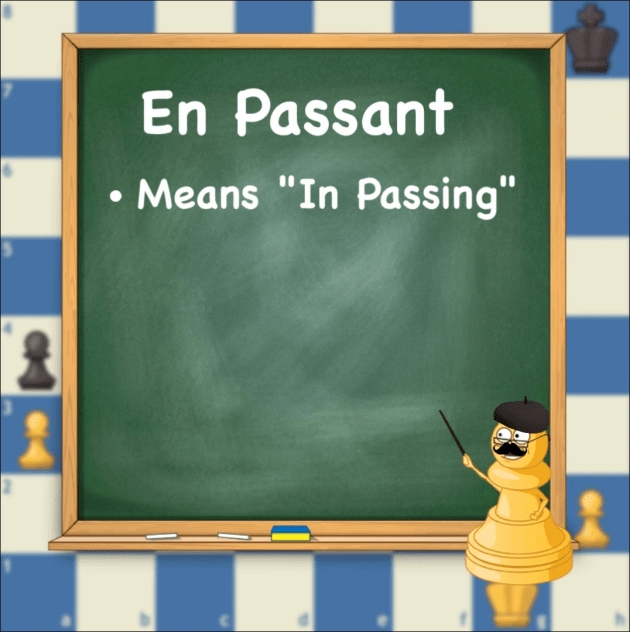 |
| Photo: Chess Kids |
If an enemy pawn advances two squares as its initial move and lands next to one of your pawns, your pawn may capture it on your next move (but not a later move) as if it had moved just one square. Known as an en passant capture, this special move is lost if not played immediately after the enemy pawn moves.
Promotion
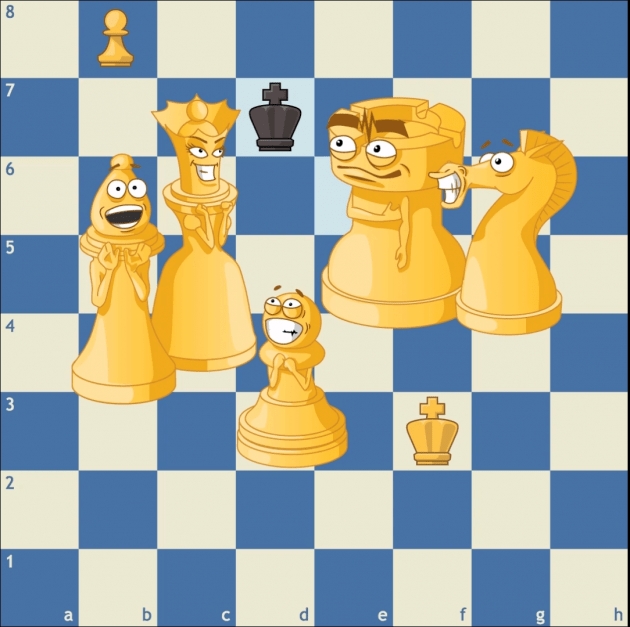 |
| Photo: Chess Kids |
When a pawn reaches the other end of the board, you may turn it into any piece other than a king. Remember that the queen is the most powerful piece.
A queen typically is the choice when a pawn promotes, but another piece may be more valuable (such as a knight to gain an advantage with a fork) depending on the board position. You may get more than one queen.
How A Chess Game Ends
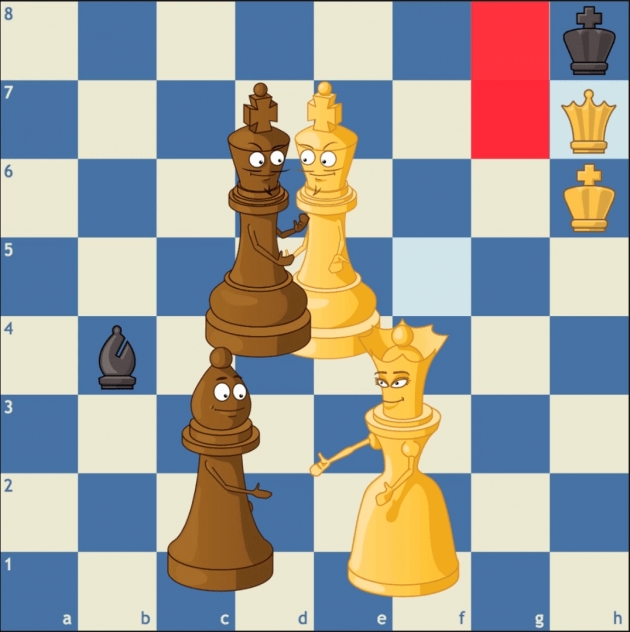 |
| Photo: Chess Kids |
Checkmate
A game is won when one player can checkmate the other. Checkmate occurs when a player who is next to move is in check and cannot move the king out of check.
Game over! wink A game may also end when a player resigns. resign Although we want to win, playing a game with a hopeless position is frustrating and discouraging. When you become experienced, it’s best to resign and start a new game in that situation, but in your first few years of playing, you should play it out as your opponent might not know how to win, or may make a big mistake.
Draw
Games do not always end with a win or a loss. They may also end in a draw (a tie), which is the result of neither player winning. Both players can agree to a draw, and a draw also results when a stalemate—a player on the next turn cannot make a legal move and is not in check—occurs.
A draw also occurs when neither player has sufficient pieces to checkmate an opponent, or when an event known as threefold repetition occurs (the same position occurs three times with the same player to move), or when the 50-move rule is met (the last 50 moves by each player doesn’t result in the capture or a pawn move).
| If we all teach children to play chess when they’re four or five, they will be primed for school. Chess teaches children many fundamentals, like problem-solving, focus, patience and follow-through. Imagine if every child was equipped with these skills as they entered kindergarten and first grade. They would embrace learning in a different way. Ideally, schools would pick up on the trend and include chess in their curriculum. However, even if the schools didn’t teach the game and a child only played at home, he or she would have an advantage over non-chess playing students. Studies show that chess helps children improve test scores in many subjects – math, science, reading and more. Children do better in school when they study chess. Kids who play chess do not only have a higher IQ but they are also more creative – something which is helpful in every school subject. Particularly, their concentration and discipline are better through chess which is key to success at school. Many children have problems trying to concentrate on one thing for a long time. The one-on-one chess lessons for kids are perfectly effective to train the attention span of a kid! Use this ancient game to develop your child’s skills and ease the start of school for them! |
For more interesting "CHESS ONLINE FOR FREE", please check out our KnowInisders!
 Top 10 Best Sites to Play Chess Online for Free Top 10 Best Sites to Play Chess Online for Free Chess is still one of the most popular indoor board games in the world. Just laying down and relaxing over a Chess game with friends ... |
|
Want to play the guitar but you are a beginner. Have you ever wondered how to play the guitar for beginners - Step by step? ... |
|
Do you want to learn how to play the drums with step-by-step training? In this guide, we provide how to choose the equipment that works ... |
|
The Best Way To Play Five Nights at Freddy's - a video game series created by Scott Cawthon in 2014, has attracted a large ... |

